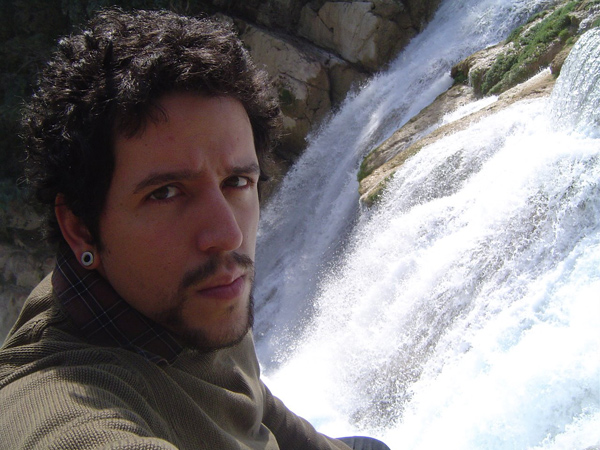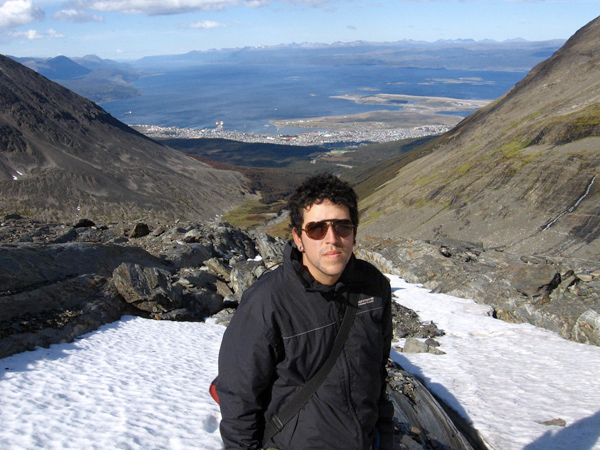Initially founded by Darrin Fowler and now run under the supervision of Mark Anstrom, the 2009 BME Scholarship winner has been decided. Here’s Mark’s write-up, followed by the winning essay. Huge thanks to all involved, and congratulations to the winner on an excellent essay!
Each year, the IAM community comes together to award $1,000 USD college scholarship to a deserving member of our community. Available to all IAM members worldwide, this year marks the fourth year we’ve been able to help a promising student cover the costs of college.
Donations to the BME Scholarship Fund can be made through our website: BMEscholarship.com.
The IAM College Scholarship is scored each year based on a variety of factors, ranging from school grades, community involvement, and the individual’s role in our community. Candidates each year are also asked to write an essay on a selected topic related to body modification.
The last several years have seen a marked change in the acceptance of body modification in the workplace. As members of the WWII generation are retiring from the workplace, members of Generation Y are stepping up to replace them. For this generation, piercings and tattoos are mainstream; however, for their Baby Boomer coworkers, they are not. Especially in this tough job market, being modified presents challenges and risks to people in the workplace that unmodified people do not have to face.
For this year’s scholarship essay, we asked applicants their thoughts on career management and navigating the workplace as members of the modified community. This year’s scholarship question:
“Many kinds of visible body modifications have yet to gain general acceptance within society. What things should visibly modded people keep in mind when starting a professional career? Do visible modifications necessarily exclude people from any careers? Feel free to discuss any aspect of this question, including choosing a profession, handling interviews, dealing with co-workers and management, the expression of personal identity in the workplace, or any other aspect.”
This year’s slate of candidates was particularly strong. While all candidates this year were well qualified, and each showed unique strengths, in the end there can be only one winner of the BME Scholarship. So here it is…
 |
It is with pleasure that I announce and give congratulations to this year’s winner: Sidra Mahmood!
Sidra is a student at the University of Toronto, majoring in environmental policy and practice, with minors in biology and women and gender studies. Sidra has served the modified community by conducting workshops and demonstrations on play piercings, blood play, use of proper equipment, and safety/biohazard education. Sidra has also served as a volunteer counsellor for Camp Oochigeas, a Toronto-based organization for children living with cancer, and has volunteered with many other worthy organizations as well.
Here is her winning essay:
Sidra Mahmood
May 1, 2009
While attitudes towards more mainstreamed forms of body modification have evolved positively in the past decade or so, it is fair to say that visible body modification has yet to gain full general acceptance within Western society. Rules surrounding the standardization of how an individual is supposed to physically present are inherently embedded in society and are driven by the mass media.
Body modification culture acts to reject these standards. It does this by providing an alternative to the heavily gendered, classist, and often unrealistic standards of beauty typically embedded in contemporary culture. This is not to say that mainstream culture inherently rejects all modification. In fact, it is able to enforce identities on individuals by imposing what type of body modification is acceptable and unacceptable (e.g. lobe piecings on women), thus stigmatizing appearances and behaviour that differ from this norm. In this case, this applies to more extreme forms of body modification which in turn, affects the ability of modded individuals to be given fair consideration when seeking a career on the basis of how they choose to present themselves.
With this essay, I aim to provide some insight on why individuals with body modifications may face substantial difficulties in getting involved in the working world, and shed some light on how they can overcome this. In the first part, I discuss reasons why visible body modification is stigmatized in the professional world, and in the second part, touch on ways that the modified individual can operate against these discriminatory practices.
For this essay, I conducted a number of informal interviews with business owners who have varying attitudes towards hiring employees with visible body modification. I also spoke with some modified individuals who have been discriminated against or have undergone negative experiences at their jobs relevant to their decision to be visibly modified. It is important to note that the names of those interviewed have been changed in the interest of privacy.
Concerning Employment
We cannot deny that in the mainstream, there are certain connotations attached to individuals who choose to modify themselves. These connotations range far and wide, and almost every modified individual has likely experienced difficulty where they have been judged unfairly on the basis of their modifications.
Interestingly, body modification culture encourages an individualistic idea of ownership over one’s physical self by way of adornment and ritual, acting to reject impositions of normativity. Since it is an experience that is arguably so inherently integrally connected to an individuals spiritual and mental well-being, it is rationally difficult to consider this to be an impediment in the abilities of an individual to be engaged in the career they choose for themselves. However, discrimination against modified individuals in the workplace tells that not all employers feel this way, and there are a number of reasons for this:
There are stigmas attached to specific forms of body modification that may lead potential employers to judge an individual unfairly. These stigmas can be damaging because they may cause speculation in the potential employer to as to how a modified individual may carry themselves in the workplace, their priorities, and their ability to work under authority.
The mainstream working world has a tendency to strip individuals of uniqueness to enforce a hierarchy of power. Indeed, there is an almost Orwellian insistence on sameness in the workplace – the very sameness that body modification culture rejects. Individuals who choose to introduce elements of individuality in how they choose to present themselves may subsequently be perceived as disobedient or a threat to the organization’s infrastructure.
Because body modification rejects the imposition of mainstream standards of beauty and normalcy, it threatens the values of individuals who are comfortable with the normative social structures they already live within. These threatened individuals proceed to make judgement and create false allusions to paint individuals who are different then them. This may sound familiar; homophobia, racism, and xenophobia are the results of similar thinking.
First Impressions and the Halo Effect
Consider this scenario: Job Seeker A applies for an administrative secretary job with a relatively conservative insurance broker, and attends the interview dressed in modest yet professional attire. She has a visible nose piercing. Job Seeker B attends the same interview dressed appropriately, but she does not have any visible piercings. Both candidates possess comparably impressive credentials and perform well on their interviews. Who gets hired?
Initially identified by the psychologist Edward Thorndike, the Halo Effect is defined as a “cognitive bias” that occurs when a strong trait in an individual influences how their other traits may be perceived, regardless of how true or false those perceptions may be. Someone who is tall, for example, may have perceptions attached to them that portray them as strong, confident, and sometimes intimidating. Similarly, someone with visible modifications as Jennifer*, a small business owner I spoke with mentioned, may look like they are “[a] troublemaker, affiliated with the criminal system… might be involved in drugs… doesn’t follow rules very well…potentially violent.”
The type of modification an individual possesses can also lead to incorrect and biased perceptions of that individual’s character and affiliations. These perceptions can be further augmented by the agency with which individuals choose to modify themselves: Sarah*, a secondary school student who is employed part-time with a popular clothing retailer recalls how a male colleague was asked to remove his nose ring when he was hired. Two other members of staff had visible nostril piercings as well, but both of them were women. When asked why he had to remove his piercing but the other staff members didn’t, he was not given a clear explanation. Instead, the employer mentioned that it just “didn’t give the right impression on customers”. We know that the garden-variety nostril piercing likely has no effect on the way this employee serves customers and completes his work-assigned duties, so the vagueness of the employer’s explanation can likely be linked to a number of reasons that can range from perceptions surrounding the employee’s sexual identity to his mental and physical health- keeping in mind that many uninformed individuals often liken body modification with self-harm.
In 2001, the employment website Vault.com conducted an internet survey, asking employers to offer up how tattoos and piercings influenced their impressions of potential job candidates. Almost 60% of employers surveyed said that they were less likely to hire someone with tattoos and piercings. The reasons offered by these employers defending their hiring practice included concerns regarding the candidate’s morals, mental well-being, ability to follow rules, and potential criminal affiliations. Many employers also mentioned that they wanted employees to represented a professional image of the company, and that this was not possible with employees who had tattoos and piercings.
When I asked John*, a local coffee shop owner about how visible modifications would compromise the ‘professional’ image he was attempting to give customers, he mentioned that he found that “[modifications] look unrefined… ‘tribal’. People with them don’t look very educated.” John added that as the coffee shop caters to mostly retired clientele, the ‘[older] clients don’t like those looks”, and that these attitudes did affect his hiring practices. John took care to mention that he personally had no agenda against individuals who chose to modify themselves, but claimed that hiring visibly modified people would compromise the reputation of his establishment against his clientele.
So what’s a Modded Person to do?
Know your rights. Depending on where you are, an employer cannot legally fire you on the grounds of visible body modification. However, be aware of the fact that you can be reprimanded on the basis of not following a prescribed dress code (which may ask you to remove or cover visible piercings and tattoos). Visible modifications may also prevent you from getting hired in the first place.
Present well. During the interview stage, be prepared, well-spoken, respectful, educated and enthusiastic. When at work, be punctual and responsible. These qualities will present clearly and most employers will likely pick up on them, and you may find yourself being a catalyst for change when you challenge people’s negative ideas about modified individuals.
Ensure that what you have does not compromise your safety in what you do. 1” lobes may not matter in a public consultation job, but this may be different in a factory environment. The last thing you want is to have something ripped out painfully because it got caught in a skid. Working with young children may carry similar risk when it comes to visible piercings, as infants typically adore grasping and tugging at dangly items.
Remember, the ability to modify your body is a privilege and not a right. While progressive employers will recognize visible modification for its aesthetic and sometimes spiritual merit, many others continue to see it as a show of rebellion and your employability may be affected by associated stereotypes. With the current stagnation in the job market, finding employment is fairly difficult to begin with, and if you are fortunate enough to be provided with an opportunity, consider compromising and covering up if need be. This is the ‘as-long-as-you’re-under-my-roof” model of reasoning.
Be willing to accept responsibility for what you decide to do. Come to terms with the fact that certain forms of modification such as facial tattoos will likely compromise your ability to get work, so measure out your priorities and decide how, when, and where you modify yourself accordingly. If you are a young person, remember that the process of getting a part-time student job versus finding a career can be substantially different, and that you may not be a Suicide Girl forever, so it is best to review your desired modifications in accordance with your future aspirations.
Remember that modification itself can be a career too! However, speak with established tattooists or piercers in the area to learn about what is involved. You will likely hear learn that it isn’t as easy, or as financially rewarding as Miami Ink may make it look, and that typically, apprenticeships involve long, unpaid hours of doing very little that relates to direct tattooing or piercing in the first while. Additionally, you are expected to participate in necessary health and safety training that you may be paying for out of pocket. There is no doubt, however, that the job is rewarding for the right people. Lastly, patience, good interpersonal abilities, decision making skills, and artistic talent go a long way, no matter where you work or what you do.
Considering working for progressive companies. Do your research beforehand, and if you need to, bring up the issue of acceptable visible piercings or tattoos during the interview if the dress code is unclear about this. Retailers and companies catering to alternative subcultures are also a good choice. Similarly, working in academia can also be a great career choice providing you have the interest in and commitment to what you are studying. Some other industries that seem to be less concerned with body modification as an impediment to your ability to work include web development, software engineering, research, beauty and cosmetics… the list is seemingly endless.
Consider self-employment. Possess a skill, product, idea or technology that you think could cater to a specific market? Have patience, and organization skills? Start-up funds? Consider working for yourself. Owning a small business can be rewarding, and you can work without worrying about compromising your ability to express yourself through your modifications to satiate someone else.
Consider management or higher-up positions. With this, In addition to challenging stereotypes regarding the abilities and capacities of modified individuals, you may be given the privilege of implementing the dress code in the first place.
Become a rock star.
In Summary:
So why is it that individuals who choose to visibly modify their bodies are stigmatized to this extent in the working world? Especially since this treatment does not apply to all body modification: breast enhancement and liposuction are seen as a perfectly acceptable forms of body modification – has someone ever been denied a working opportunity on the basis of them having had a facelift?
It seems ironic, especially since body modification is not a particular tenet of any one such subculture. In this day, great-grandmothers are just as likely to get tattoos as are members of bike gangs. Middle-aged professionals are just as likely to sport visible modifications as are teenaged skateboarders. Modification is illustrative of an individual’s vitality and creativity and employers are doing themselves a disservice when they fail to recognize this.
Finally, one simple browse through the membership of IAM, BME’s community portal, tells us that individuals who modify themselves come in all sexes, ethnicities, sexual identities, shapes, sizes, education levels, and socio-economic backgrounds. The members of IAM include PhDs, sex workers, models, artists, doctors, hair stylists, small business owners, educators, tattooists, dog trainers, writers, musicians, chefs, and much more. Body modification culture does not discriminate and one can look to the cultural and ritual significance of body modification throughout history and around the world to understand why it has always been an important tenet of any society’s development.





